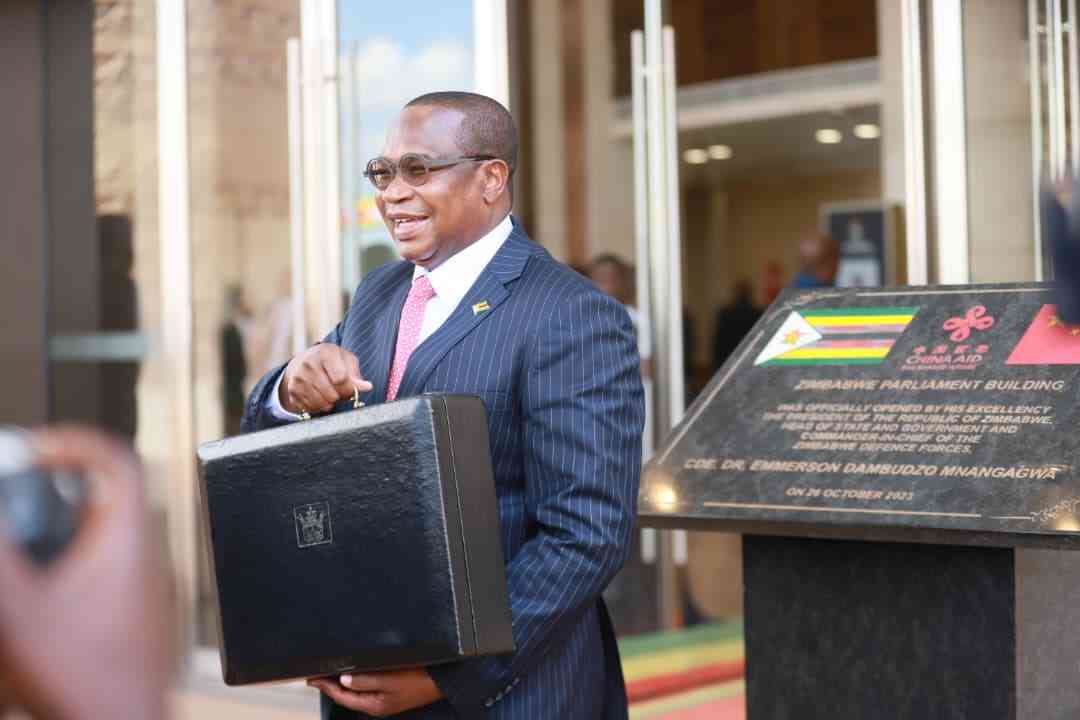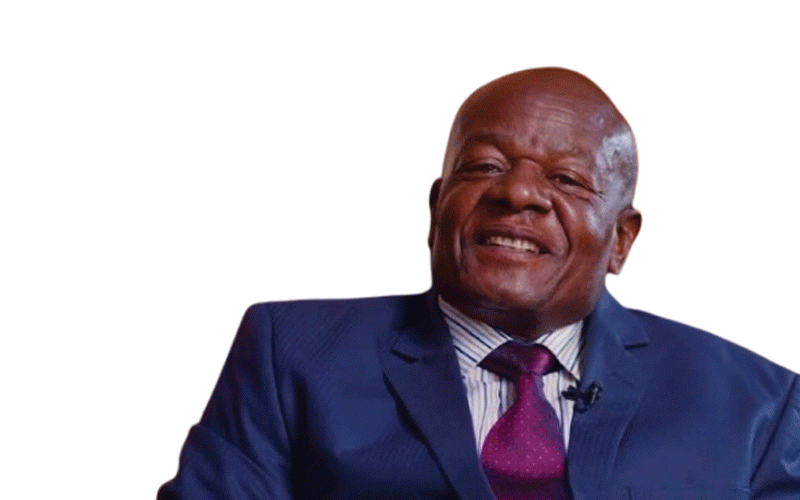
TWENTY years after formally adopting the Look East Policy in the face of economic sanctions by the West, Zimbabwe is finally reaping rewards from its strong ties with China as evidenced by the rolling out of big infrastructure projects backed by Beijing amid ballooning trade between the two countries.
Zimbabwe officially adopted the policy to strengthen trade ties with China in 2003 after Western countries sought to isolate the country following the land reform programme that started at the turn of the millennium.
China is now the biggest source of investments for Zimbabwe’s agriculture, mining and informal sectors of the economy. It is also this Harare’s third largest trading partner.
Figures provided by the Chinese embassy in Harare showed that trade between Zimbabwe and China surged 29% year on year to a record high of US$2.43 billion last year.
Zimbabwe exported US$1.3 billion worth of goods to China and imported US$1.13 billion worth of goods from the Asian economic giant.
The country mainly exports tobacco leaf, processed tobacco, ferroalloys, edible fruits, leather, iron and steel and chrome ore, among other primary products.
On the other hand, Zimbabwe imports machinery, pharmaceuticals, pesticides and vehicles, among other products from China.
In the third quarter of this year, Chinese compares were awarded licenses with a potential to bring US$2.79 billion in investment inflows into Zimbabwe, latest statistics show.
- Power cuts spur Zimbabwe’s green energy revolution
- Mines propose fresh power import deal
- Power cuts spur Zimbabwe’s green energy revolution
- Coal crisis pegs back power generation
Keep Reading
Huge jump in investments
A throwback investigation supported by the Information Development Trust (IDT), a non-profit organisation that spearheads investigative journalism in Zimbabwe and Southern Africa, showed a huge jump in Chinese investments in the country, especially post 2017.
Beijing was President Emmerson Mnangagwa’s first foreign destination outside Africa when he succeeded the late president Robert Mugabe six years ago and the visit marked the beginning of heightened Chinese investments in Zimbabwe.
Mnangagwa’s visit in 2018 saw China upgrading the bilateral status between the two countries to that of a comprehensive strategic partnership.
The comprehensive strategic partnership status conferred on Zimbabwe preferred status as a destination for investment capital, aid, skills and other initiatives led by China, the second biggest economy in the world after the United States.
According to the Zimbabwe Investment and Development Agency (Zida) 2023 third quarter report, Chinese investors dominated proposed foreign investments by a wide margin.
Of the 180 new licences issued during the period under review, 121 were given to Chinese investors who want to pour in US$2.8 billion to the economy.
Ten licences were issued to locals, who proposed to set up projects valued at US$33 million.
The proposed Chinese investments in Zimbabwe were a tenfold increase from the US$271 million committed during the same period last year.
China’s closest rival was the United Arab Emirates that secured licences for investments amounting to US$498,5 million.
The combined value of investment licenses issued during the third quarter reached US$3.41 billion, according to Zida.
“During the year to September 2023 the agency managed to draw investors from 38 countries whilst in 2022, investors were drawn from 27 countries,” Zida said in the report released on October 31.
“During both periods investors from China were the most by number and investment value with mining being their most preferred sector followed by the manufacturing sector.
“In Q3 2023, 82% of projected investment value for all new licence approvals were issued in the energy sector.
“The largest projected investment was by New Eagle Industrial Park (Pvt) Ltd which intends to invest US$2,3 billion towards the development of an energy industrial park in Mapinga.
“This was followed by Sunone (Pvt) Ltd with US$496.8 million towards the development and operation of a 500MW solar power plant in Mazowe, Manhize and Mutoko.”
Chinese firms Hong Kong Eagle International Holding and Pacific Goal Investment want to develop an integrated industrial park that will include lithium-salt and nickel-sulphate plants and a nickel-chromium alloy smelter in Mapinga.
“The goal of the New Energy Special Economic Zone Industrial Park is to develop an industrial value chain represented by new energy metals such as lithium and nickel, to increase the added value of the mineral products and form new energy production bases that embrace the world while based in Africa,” the company said when it announced the project.
Huge lithium deposits
Zimbabwe, which holds some of the largest hard rock lithium deposits in the world, is taking advantage of the accelerated global shift to electric vehicles and soaring prices of the mineral to attract investors mainly from China.
China’s Huayou Cobalt is investing US$300 million to develop the Arcadia lithium mine in Goromonzi.
Another Chinese conglomerate, Sinomine Resource Group, took over Bikita Minerals, which was at the time Zimbabwe’s sole lithium producing mine and one of Africa’s oldest, in a US180 million deal in 2022.
Sinomine invested another US$200 million to expand Bikita Minerals’ existing operations and the project included the construction of two lithium processing plants to produce 250 000 tonnes of spodumene concentrate and 480 000 tonnes of patalite per year.
Spodumene is a key battery mineral and petalite is a lithium mineral used in the glass and ceramic industries.
The investment trends in the third quarter where Chinese investors dominated were consistent with the first half of the year, Zida’s 2023 second quarter report released in July showed.
During that period 160 investors from China were licenced, up from 53 during the same period in 2022.
The Chinese investments projected at US$948, 67 million accounted for the lion’s share of total investments of US1.84 billion registered during that period.
India with 24 investors that wanted to bring US$27.01 million worth of investors was the second largest source of investments for Zimbabwe during the second quarter, showing the huge gulf in investment inflows from China and other countries.
Eighteen local investors registered investments with a projected value of US$222,53 million during the period under review.
“In 2022, licences were issued to investors from 22 countries including Zimbabwe,” the Zida report said. “In the first half of 2023 the Agency managed to draw investors from 32 countries.
“During both periods, China had the highest number of investors and investment value by a considerable margin with mining being the most preferred sector followed by the manufacturing sector.”
Chinese firm Zhongjin Heli Energy (Pvt), which wants to set up a US$400 million coal mining and thermal power generation project in Matabeleland North, was the largest single foreign investment proposition for Zimbabwe in the first quarter of the year.
To track the major Chinese investments in Zimbabwe in the past six years, this publication compiled a list of top projects as shown below.
New Parliament Building
In October this year China officially handed over to Zimbabwe the new $100 million Parliament Building in Mt Hampden on the outskirts of the capital Harare.
The imposing six-floor complex was built on 33 000 square metre land and was fully funded by the Chinese government as a “gift to the people of Zimbabwe.”
It comprises a six story office complex and a four story building housing the National Assembly and Senate.
The two buildings are linked by three bridges on each floor and the National Assembly can accommodate 400 people while the Senate chamber has a capacity of 150 seats.
It also has conferencing facilities, 15 committee rooms, office space for staff and a car parking area.
Speaking at the official handover of the building, Mnangagwa described it as “a symbol of progress and cooperation” between Zimbabwe and China.
“This marks a significant milestone in our enduring friendship with China,” he said.
“Over and above these projects, we have witnessed increased diplomatic and economic engagement between Zimbabwe and the People’s Republic of China.
“In addition, our country has seen many more Chinese companies investing in various sectors of the economy.
“The emergence of quality products from Zimbabwe, particularly citrus, entering the Chinese market is a welcome development.”
Hwange Thermal Power Station expansion
Zimbabwe’s push for electricity self-sufficiency received a major boost this year when Chinese firm Sinohydro Corporation completed the Hwange Thermal Power Station Unit 7 and 8 expansion project, which added 600 megawatts into the national grid in August.
The Zimbabwe Power Company, a Zesa subsidiary, secured a US$1.3 billion loan from the China Export–Import Bank for the additional units at the country’s largest thermal power station in Matabeleland North.
Kariba South Hydro Power expansion project
Commissioned in March 2018 by Mnangagwa, the Kariba South Hydro Power expansion project was at the time described as arguably Zimbabwe’s biggest power development since independence.
The US$533 million project done by China’s hydro-power engineering and construction firm Synohydro Corporation added two 150MW units at the Kariba Hydro-Power Station.
It lifted Zimbabwe’s main hydro-power plant’s installed capacity from 750 MW to 1 050 MW.
Robert Gabriel Mugabe International Airport expansion
The Chinese-funded expansion of the Robert Gabriel Mugabe International Airport was completed in July this year.
China Jiangsu International undertook the terminal expansion project that began in 2018 with funding from the Export-Import Bank of China.
The expansion of the international airport is expected to increase the holding capacity of Zimbabwe’s main airport to six million people per annum from 2,5 million.
New features included an international terminal building and aprons, four new bridges, a secondary radar system, a VVIP pavilion and an airfield ground lighting and communication system, among other features.
Mnangagwa said the airport expansion project had brought many benefits to Zimbabwe’s economy, “including skills and technology transfer, as well as the creation of employment and empowerment opportunities.”
Tsingshan’s US$1 billion steel plant
Mnangagwa last year broke ground at the site of a steel plant, which is being billed as the biggest in Africa and is located at Manhize near Chihvu.
The project by Dinson Iron and Steel, a unit of China’s Tsingishan Holdings, is touted as the one of the biggest private investments in Zimbabwe.
Tsingshan is the world’s biggest stainless steel company and one of the top nickel producers in the world.
It also owns the Afrochine mine in Selous that produces 100 000 tonnes of ferrochrome and a 350 000 tonne-per-year coke plant in Hwange.
Taking advantage of isolation
The Chinese embassy in Harare told this publication that Beijing was taking advantage of Western countries’ isolation of Zimbabwe to spread its tentacles in the country’s economy in an arrangement that was mutually beneficial to Harare and Beijing.
“Chinese private investments are becoming a vital force to promote Zimbabwe's economy,” the embassy said.
“Through open bidding on the international market, some Chinese large enterprises have invested in the local mining sector and are revitalising the resources that were long ignored by Western companies.
“Many Chinese enterprises have also invested in other sectors such as tobacco planting and export, crop farming, building materials and manufacturing as well as freight and logistics.
“These investments introduce Zimbabwe's products to international markets, bring Zimbabwe considerable foreign exchange earnings and tax revenues, tens of thousands of job opportunities and technology transfers and promote Zimbabwe's competitiveness in the global economy.”
Shanel Liu, vice president of the Chamber of Chinese Enterprises in Zimbabwe (CCEZ), said companies from the Asian country had invested heavily in Zimbabwe in the past five years because of a conducive investment climate.
CCEZ has a membership of 85 Chinese companies, including listed firms that have interests in agriculture, mining, telecommunications, tourism, power generation, health and manufacturing, among other sectors.
“Zimbabwe is rich in mineral resources. In the past five years, there are more (Chinese) mining companies that have invested in the mining industry,” Liu said.
“Chinese firms have been involved in several infrastructure development projects in Zimbabwe such as the construction of the Kariba South hydropower station and the expansion of the Victoria Falls International Airport.
“These projects have helped to improve Zimbabwe’s infrastructure and boost economic growth.
“Chinese firms have also been investing in Zimbabwe’s mining sector, particularly chrome and lithium.
“This has helped to increase production and generate revenue for the country.”
She said some of the challenges Chinese investors still faced in Zimbabwe included “policy inconsistency, currency and tax burdens.”
Some of the policy interventions that have made Zimbabwe attractive for investment include the relaxation of indiginisation laws, protection of property rights through government’s commitment to compensate white former commercial farmers whose farms were acquired during the land reform programme, re-engagement with the international community and other ease of doing business reforms.
Historical ties
Farai Chigora, an economist and Africa University head of management and entrepreneurship said Zimbabwe and China’s ties dated back to the liberation struggle and were now being used for the benefit of the economy.
“Evidently the relationship brought about the new Parliament building and so forth,” Chigora said. “In fact it is a trusted relationship so to say.
“That is the reason for that grip (by Chinese investors) as they have proved to act on critical infrastructural development matters as needed by the government.”
Vince Musewe, a prominent local economist, attributed the rising Chinese investments in Zimbabwe to Beijing’s pro-Africa policies.
“China has a long term plan not only for Zimbabwe, but for Africa at large and they are patient,” Musewe said.
“It actually it has a 50-year plan. They are not going to be coming in and out.
“When they are in, they are in. We must also remember the historical ties.
“This relationship dates way back to the days of the liberation struggle.
“This is why they remain in play regardless of the politics of the day.
“This is why it is no surprise that in terms of investment in Zimbabwe, China stands head and shoulder above all others.”










